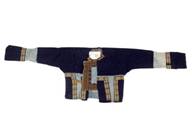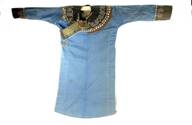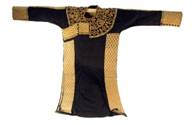TELDAP Collections
| The Clothing of Taiwan's Indigenous People– Men and Women's Clothes |
|
The clothing of Taiwan's indigenous people represents the prominent features of each tribe. It symbolizes cultural ideas and beliefs with vivid colors and diverse styles. Every indigenous tribe has its own unique clothing style and characteristics. Creatively, Paiwan, Rukai and Bunun peoples use dark blue or black cloth to present their lively and varied designs. Amis, Tsou, Saisiya, and Atayal peoples are apt to use blood red and azure (sky blue) to express their reverence and love for Nature. And the Yami (Tao) people living on Lanyu Island are the only indigenous tribe to weave cloth using palm fiber. For textile production, all indigenous groups used a squared cloth system. This means they used a horizontal loom with a strap to weave exquisite and beautiful cloth, and then sewed pieces of cloth together to make an integrated garment. A considerable amount of pendants are used by all the indigenous people in Taiwan to make attractive clothing. Shells, buttons, lazurite beads and so forth are added not only for decoration, but also as symbols of status and wealth. The clothing carries a traditional aesthetic meaning. All the colors, patterns and designs signify artistic property and social significance. Trade with the Han had an overwhelming impact on the clothing of Taiwan's indigenous people. The materials and styles have gradually changed. Before the Japanese colonial period, most clothing was made of linen. Later, imported cotton cloth and printed calico were greatly used. Recently, chemical fibers have been replacing the original textile. Clothes that were traditionally separate pieces have changed into light and convenient suits. All these changes have been made to accommodate time and environmental constrictions. However, the clothing of Taiwan's indigenous people has not vanished due to the influences of Han culture and modernization. Thanks to excellent preservation of festivities and customs, traditional clothing can be passed on to the next generation and carry new cultural significance. In certain festivities or ceremonies, indigenous people fully express their ethnic identity by continuing to wear their traditional clothing.
Relevant collections of the clothing of Taiwan's indigenous people - “men and women's clothes”:
 Chinese name:男子長袖短上衣
English name:Male Long sleeve Jacket
Rukai name:IBIBOGO
Former name:Women's top
Chinese name:女子長衣 English name:Female Garment
Rukai name:DALABU
|













